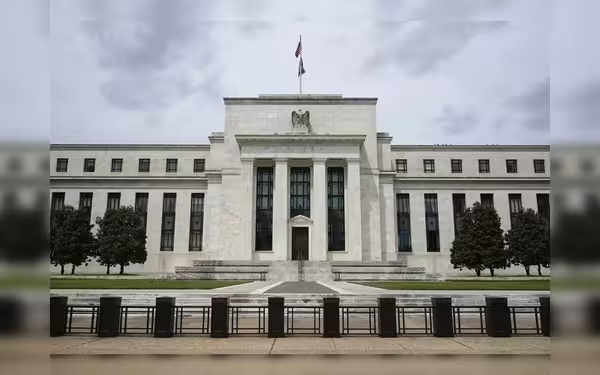Saturday, November 16, 2024 05:51 PM
Federal Reserve Meeting Signals Potential Rate Cut
- Fed's two-day meeting may lead to first rate cut since March 2020.
- High borrowing costs impact consumers and businesses significantly.
- Economic growth remains positive despite inflation control measures.
 Image Credits: tribune.com.pk
Image Credits: tribune.com.pkThe Federal Reserve's upcoming meeting may result in its first rate cut since March 2020, impacting consumers and businesses amid ongoing economic growth.
The Federal Reserve, often referred to as the Fed, plays a crucial role in shaping the economic landscape of the United States. It is responsible for setting interest rates, which directly influence borrowing costs for consumers and businesses. Since July of last year, the Fed has maintained its key lending rate at a two-decade high, a decision aimed at controlling inflation. However, this has also led to a tightening of financial conditions, making it more expensive for individuals and companies to borrow money.
As the Fed prepares for its two-day meeting, which is expected to conclude with a significant announcement on interest rates, many are speculating about the possibility of a rate cut. This would mark the first reduction since March 2020, a time when the economy was grappling with the initial impacts of the COVID-19 pandemic. The anticipation surrounding this meeting is palpable, as a rate cut could provide much-needed relief to consumers and businesses alike.
Despite the challenges posed by high borrowing costs, economic growth in the U.S. has remained positive. This resilience can be attributed to various factors, including strong consumer spending and a robust job market. However, the question remains: will the Fed decide to lower rates to further stimulate growth, or will it maintain its current stance to combat inflation?
As we await the Fed's decision, it is essential to consider the broader implications of such a move. A rate cut could lower monthly payments for loans and mortgages, making it easier for families to manage their finances. On the other hand, it could also signal that the Fed is concerned about slowing economic growth, which could lead to uncertainty in the markets.
The outcome of the Fed's meeting will be closely watched by economists, investors, and everyday Americans. A rate cut could usher in a new era of economic growth, while maintaining the current rate could indicate a cautious approach to managing inflation. Regardless of the decision, it is clear that the Fed's actions will have far-reaching effects on the economy and the financial well-being of many.













